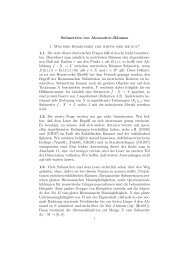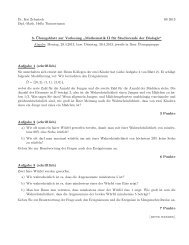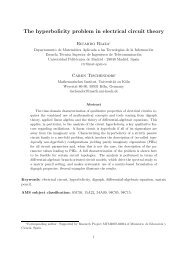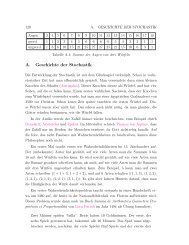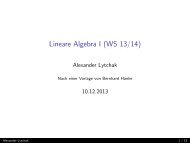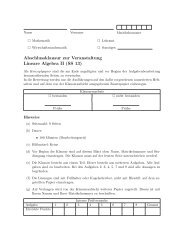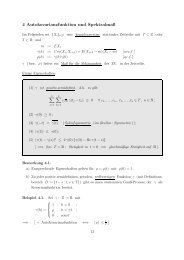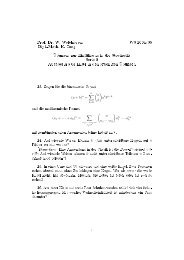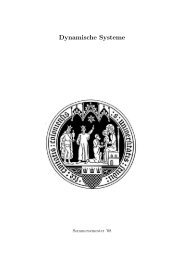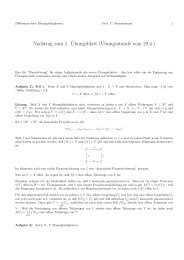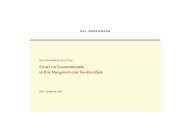Inhaltsverzeichnis - Mathematisches Institut der Universität zu Köln
Inhaltsverzeichnis - Mathematisches Institut der Universität zu Köln
Inhaltsverzeichnis - Mathematisches Institut der Universität zu Köln
Create successful ePaper yourself
Turn your PDF publications into a flip-book with our unique Google optimized e-Paper software.
DMV Tagung 2011 - <strong>Köln</strong>, 19. - 22. September<br />
René Lamour, Roswitha März<br />
Humboldt-<strong>Universität</strong> <strong>zu</strong> Berlin<br />
Computational aspects of detecting DAE structures II<br />
A regularity region describes the local characteristics of a Differential-Algebraic Equation (DAE).<br />
We determine regularity regions of DAEs by means of sequences of continuous matrix functions. The<br />
matrix sequence is built step-by-step by certains admissible projector functions starting with the Jacobian<br />
matrices of the DAE data. For time-dependent and nonlinear DAEs the sequence contains a differentiation<br />
of a projector function.<br />
The matrix functions are constructed pointwise. Beside common linear algebra tools such as matrix<br />
factorizations and generalized inverses, widely orthogonal projector functions are applied and algorithmic<br />
differentiation technices are used to realize the differentiation.<br />
Several constant-ranks of related matrix functions determine the structure of a regularity region. This also<br />
allows for the detection of critical points, which marks the bor<strong>der</strong> of different regularity regions.<br />
A comparison with other approaches, the discussion of numerical experiments and open problems<br />
complete the paper.<br />
Roswitha März, René Lamour<br />
Humboldt-<strong>Universität</strong> <strong>zu</strong> Berlin<br />
Computational aspects of detecting DAE structures I<br />
We present a different view on DAEs which relies on the decomposition of the DAE definition domains<br />
into several so-called regularity regions. We consi<strong>der</strong> the regularity regions as prior in the analysis<br />
against obvious and hidden constraints. Determinig regularity regions we do not suppose any knowledge<br />
concerning solutions and constraints. On each regularity region the DAE has uniform structure. The<br />
structure may be different on different regions.<br />
The commonly applied un<strong>der</strong>standing of a DAE having index µ corresponds to the specific case if all<br />
solutions remain in exact one regularity region. However, more generally, the DAE solutions may shuttle<br />
between different regularity regions and stay on bor<strong>der</strong>lines. If solutions cross bor<strong>der</strong>s of regularity<br />
regions, a critical flow behaviour must be expected. We demonstrate this phenomenon by examples.<br />
We determine regularity regions by means of sequences of continuous matrix functions built with certains<br />
admissible projector functions. We benefit from several constant-rank conditions which offer the DAE<br />
structures, which is useful also for detecting critical points.<br />
81




